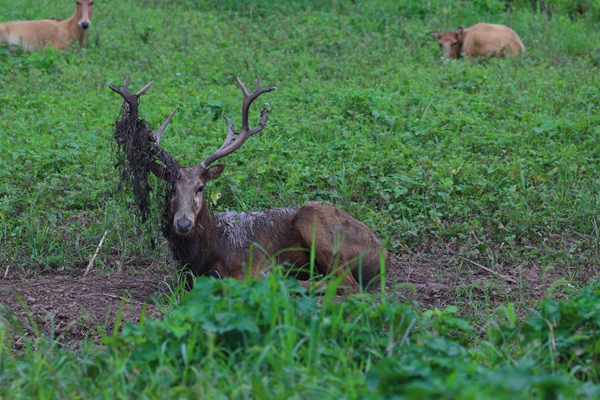 |
|
A milu alpha during the breeding season often wallows in mud to attract females.[Photo provided to China Daily] |
The reintroduction of the milu deer to its motherland has seen the population bounce back from the brink of extinction, Shen Wendi reports.
A small herd of milu deer-six males and four females-paces back and forth uneasily at the entrance of a shelter in Nanhaizi Milu Park, located in Daxing district, beyond the South Fifth Ring Road of Beijing.
After a few minutes hesitation, the leading milu, puffing in trepidation, finally steps out and leads the rest of the deer along a wire-fenced passageway set up by researchers at the Beijing Milu Ecological Research Center that leads to a truck.
On Dec 7, the vehicle took them to East Dongting Lake National Nature Reserve in Central China's Hunan province, which is to be their new home. They were relocated to enrich the gene pool of the milu herd in the nature reserve.
Also known as Pere David's deer, milu are native to China, where they roamed on the marshes and plains along the Yellow River and the Yangtze River. But due to hunting and the loss of their natural habitat, their population dwindled to around 200 during the Qing Dynasty (1644-1911), when the last of the species could be found at Nanhaizi, which was then the royal hunting park.
The deer, which combine the features of a horse's face, a donkey's tail, a cow's hooves and a stag's antlers, were viewed as auspicious in Chinese mythology, but fortune did not smile on the milu and the species died out in the country in the early 1900s.